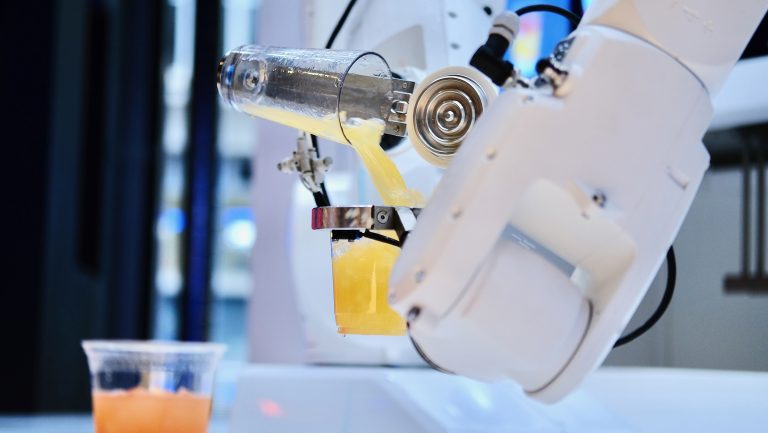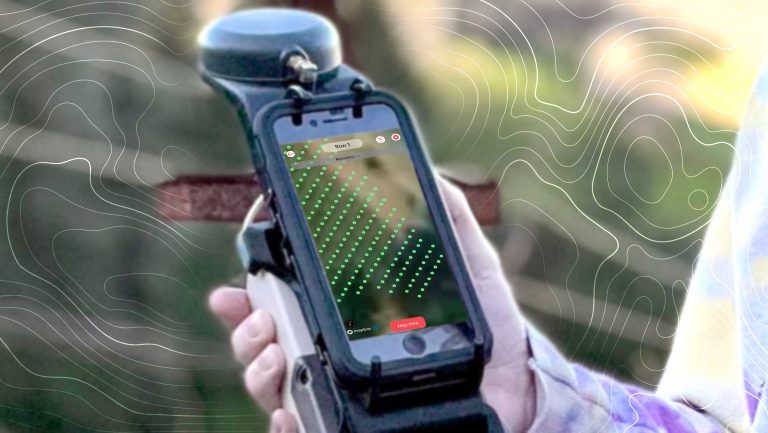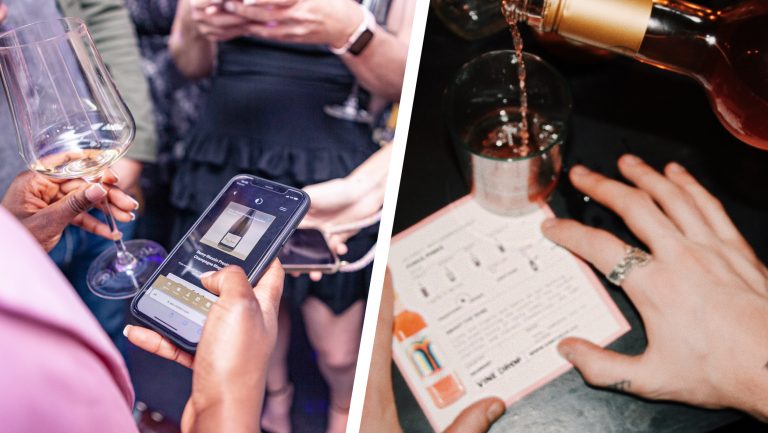Like any good bartender, Cecilia.ai likes to joke with the clientele. Her gags are not, objectively, good—“Just like alcohol, I’m only 40 percent sure what you just said,” she deflects, during a moment of miscommunication. Nevertheless, there is something charming about the way she greets customers by name and delivers earnest drink recommendations: “If you’re looking for a winner, take Miami’s favorite, the sour and refreshing filthy black cherry Margarita!”
All this despite the fact that Cecilia.ai is not a person but an avatar, on the screen of an automated cocktail dispensing machine, using voice recognition software to make conversation and take drinks orders.
There are three Cecilia.ai’s operating in the U.S. today, including one in Microsoft’s Seattle headquarters, and one at Florida International University’s beverage-based hospitality program, the Bacardi Center of Excellence, where one of her human operators, lecturer Cristina Moguel, has just taken Cecila.ai up on her filthy black cherry Margarita recommendation. Moguel puts a glass of ice on a drip tray and three liquids pour out of a nozzle to fill it up. Moguel sips it and proclaims it delicious.

Don’t miss the latest drinks industry news and insights. Sign up for our award-winning newsletters and get insider intel, resources, and trends delivered to your inbox every week.
Gimmick or Viable Reality?
Cecilia.ai is one of a burgeoning field of robot bartenders. Generally, these machines fall into two categories: impressive, front-of-house robots, some of which have futuristic robotic arms, and automated machines that feel more like drinks dispensers, increasingly found behind the scenes at casinos and events venues.
Last year, McKinsey Global Institute predicted that 45 million American jobs—27 percent of the workforce—would be disrupted by automation by 2030. The bulk of those workers, McKinsey predicted, would find their jobs dramatically changed, while nine percent of the workforce would have to find new jobs altogether. COVID-19—and the consequent much-reported labor shortages throughout the hospitality industry—is predicted to have accelerated the coming changes.
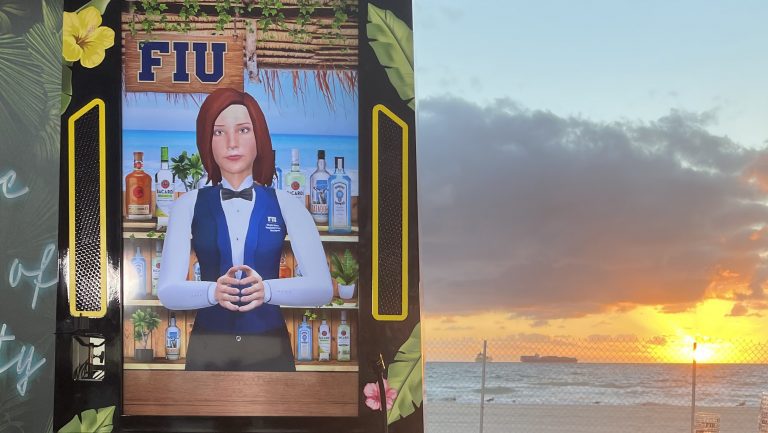
There are already smoothie-making androids popping up in kiosks in San Francisco and robots with cat-style faces delivering dim sum in New York City, raising the question of whether bartending robots will ever be a viable reality. Moguel believes that “beverage and culinary innovation is just going to be catapulted forward. We still face labor shortages. We still have lingering effects of recruitment plaguing our students and our staff. And so I believe [this technology] is going to be leaps and bounds beyond what it currently is now.”
That’s why Cecilia.ai is such a great teaching tool, she says: students learn how to program her scripts and trigger her decision tree, as well as how to clean out the machine’s tubes and come up with suitable recipes for a machine that can store 12 bottles and make 120 drinks an hour.
In theory, the applications are numerous for such machines, which can serve drinks 24/7 in airports and hotel receptions, and can collect real time data to inform bar managers on inventory needs shifting. And yet many clients who buy theatrical, front-of-house robots seem to do so not for practicalities but for the wow factor.
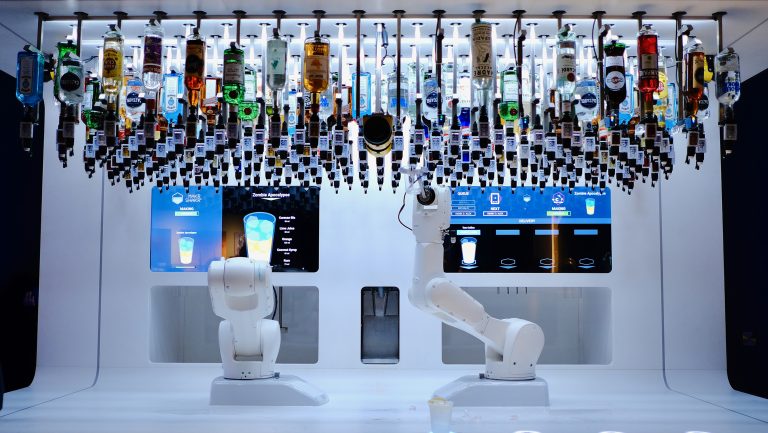
Front-of-House Robots in Development
This is especially true for bar robots with robotic arms, such as Yanu, a sleek circular unit that can grab a glass, fill it with ice, then select cocktail ingredients from bottles on an overhead rack, serve drinks, and handle payments. It has prototypes circulating at events in Dubai and Europe. Another, the Italian Makr Shakr, can actually—uniquely—shake cocktails, rather than simply mixing them. The company’s first robot was built for a Google conference in 2013, where a senior staffer from Royal Caribbean cruises saw the machine, fell in love, and ordered one for €1 million, which funded the initial part of Makr Shakr’s growth. Now it has 15 models in use, including eight on Royal Caribbean cruise ships, one in a bar in Las Vegas, and another in a new VR gaming space, Sandbox VR, the first robot bartender in London. In January it will be installed in the duty free store of Singapore’s Changi Airport.
Makr Shakr has since developed a business model which, in part, seeks to reassure clients that might be wary of taking delivery of such an unusual and complex machine, the company’s CEO, Emanuele Rossetti, says. The standard contract incorporates a €99,000 charge for the machine, then €0.99 on each cocktail made, which means everyone is similarly motivated to keep the machine up and running.
But in order to actually disrupt the bar industry, says Rossetti, the company would like to increase production capacity and, in the name of visibility, open their own flagship bars in key cities such as Paris and New York, for which external funds would be required, which Rossetti is seeking. Yanu’s CEO, Alan Adojaan, is seeking investment too.

It’s not an easy industry to crack; many robot bartenders have launched with fanfare and fallen by the wayside. René Luchsinger, the CSO of F&P Personal Robotics, for example, is no longer “actively marketing” their robot bartender, Barney, but has decided to focus on the more promising Leo, its assistive robot for the care industry. People are “attracted to Barney,” he says, “but as soon as it comes to the investment, they are reluctant. My personal opinion? It’s a gimmick. It’s an eye catcher. It’s an attraction.”
Back-of-House Automated Drinks Machines
Back-of-house automation, on the other hand, is already making its presence felt in many casinos, where large, decidedly unsexy-looking machines have been making drinks behind the scenes for a couple of years. Some are ordered using touch screens then delivered to tables by humans; Las Vegas-based Smart Bar is a leader in such technology. There is buzz about Tended Bar, too, a company based in Jacksonville, Florida, which recently raised $5 million in investment, largely from venture capital companies, for its vending machine-type kiosks which use facial-recognition technology to check ID and serve drinks at sports and entertainment venues.
Meanwhile, San Diego-based start-up Backbar One recently raised a $3.5 million seed round, led by food and tech specialist Finistere Ventures for an automated cocktail dispenser largely designed to fulfill table service drinks orders in restaurants. Finistere partner Steve Goldberg says he was attracted to the deal in part because he had been monitoring trends in the industry, and was aware that the labor shortage was a real issue. Backbar One felt like a “natural solution,” he says; so many venues “just don’t have the people to fill jobs.”
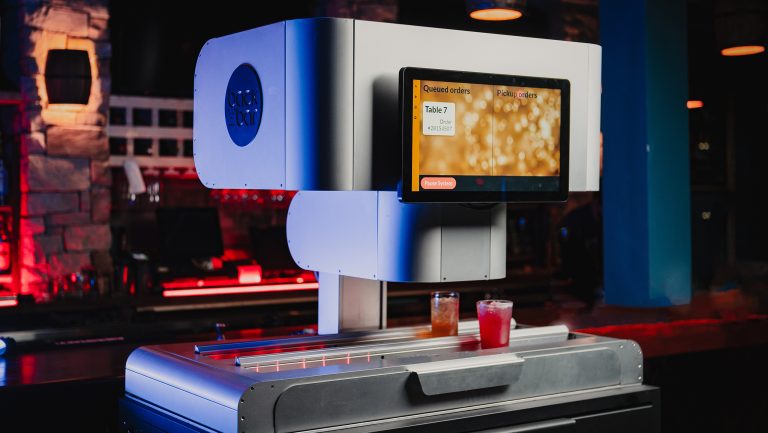
Of course, there are many things human bartenders can do that robots cannot. Most cannot strain drinks, or apply complex garnishes. Where they have any conversational ability, they are only amusingly ridiculous. Nor can current robot bartenders tell whether a customer is too inebriated to carry on ordering alcohol (in 2019, a coalition of casino servers petitioned the New Jersey Division of Gaming Enforcement to investigate automated drinks machines on this issue.) Most robotics companies argued their machines worked best when embedded with humans; though most also argued that fewer humans would be needed, overall, with a robot on board.
Donny Clutterbuck, a bartender with 20 years experience, who is on the board of the United States Bartenders’ Guild, can see potential benefits. In high volume situations, where the human-to-human interaction is transactional and high speed, he says, he is beginning to favor the robot bartender over the human one. Mundane interactions can themselves be dehumanizing, he says. “If I could employ robots to do all the stuff I would rather not be doing, so I could actually look up once in a while, I would,” he says. “At the moment, I’m so busy doing the labor that I can’t even do the parts that I think humans are there for.”

Dispatch
Sign up for our award-winning newsletter
Don’t miss the latest drinks industry news and insights—delivered to your inbox every week.
Hannah Marriott is a New York City-based British journalist who writes about culture and lifestyle for publications including The Guardian, where she was previously fashion editor, The Times, and The Financial Times. Follow her on Instagram @maid_marriott_innit

